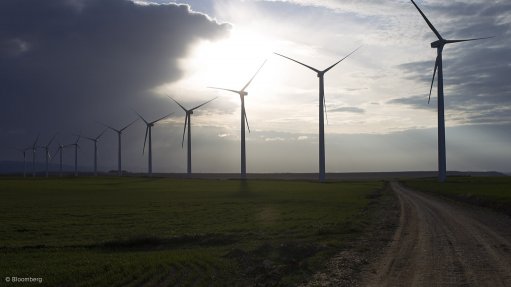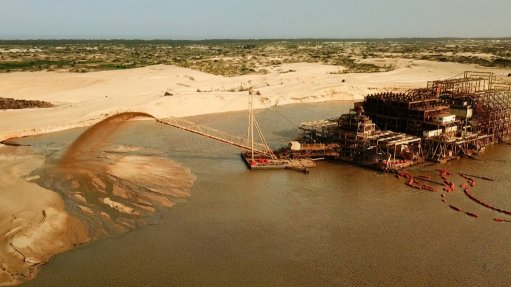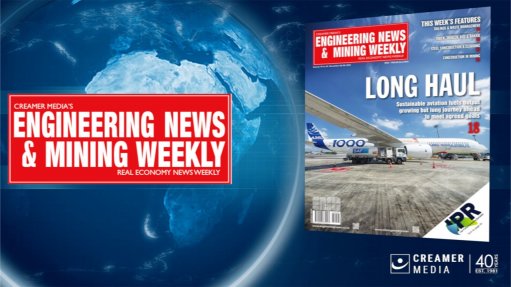Global trade and development trends impact on South Africa, present opportunities
The recently released United Nations Conference on Trade and Development (Unctad) Trade and Development Report for 2018, entitled ‘Power, Platforms and the Free Trade Delusion’, outlines a number of lessons that South African can learn, and also presents opportunities for the country to capitalise on.
Opportunities abound for South Africa in a number of areas, despite the worrying trend of the world economy remaining on shaky ground.
Unctad Globalisation and Development Strategies senior economist Dr Diana Barrowclough highlights infrastructure as one potential area for growth, with South Africa notably scoring positively on all areas assessed for infrastructure planning, out of 40 countries, owing to the country’s National Development Plan, which theoretically presents a good infrastructure implementation strategy.
She does caution that this is not the same as infrastructure implementation, but does present a “positive start”.
Development banks also present opportunities, with the country boasting one of Africa’s largest and most expansive in this regard. However, these need more financing to realise their full potential.
Manufacturing is also an area of opportunity and is imperative for development. Barrowclough argues that South Africa is not achieving the required advantages from participation in the global value chain or from trade, as is the case with other developing countries.
“While trade has accelerated in recent years and while developing countries have captured a growing share of that trade, it has not for the most part brought about the transformative [benefits] of development that was hoped for.
“It has rather led to a hollowing out of domestic value-added in manufacturing, imbalance in gains between capital and labour, and . . . rising profits alongside growing inequality.”
South Africa’s value-added share in manufacturing exports has fallen by 12.3% since 1995. While this decrease is in line with that of other developing counties, South Africa’s numbers are particularly concerning, as the aggregate for developing economies in total was a decrease of only 3.5%.
This reflects broader trends where the reshaping of global manufacturing production and trade is increasing inequality. Most countries found that being part of global value chains is associated with a rise in the income share going to capital and a fall in the income share going to labour – especially for low and medium skilled workers, but also for labour employed in headquarter functions.
China was noted as an exception in this regard, owing to a well calibrated industrial policy to help exploit growing demand from developing countries, and the use of policy space to actively leverage trade through targeted industrial policies aimed at raising domestic value-add in manufacturing exports.
The country has also developed independent financing mechanisms and acquired control over foreign assets, that are now being perceived by developed countries as a threat to their own business interests.
Therefore, the country managed to increase the share that went to labour, in both headquarter and factory floor functions.
“We can learn a lot from China’s experience and should be trying to follow some of its examples where possible, rather than closing down those doors.”
This declaration is further underlined by another finding in the report, which shows that from the Brazil, Russia, India, China and South Africa (Brics) countries, China was the main contributor to the group’s share in global output growth.
Focus is generally centred on wages in the manufacturing space, but Barrowclough argued that wages should be viewed as an essential contribution to aggregate demand, not merely a cost of inputs to be minimised.
Unctad’s previous reports champion minimum wages polices, labour regulations and income policies for developing countries, to create a fairer distribution of income – partly for the positive effect on demand and giving support to the creation of a virtuous cycle of consumption, investment and growth.
The report provides insight into the way the current structure of the excessively financialised economy is continuing to drive a wedge between capital and labour, the labour tending to lose its share of gross domestic product, while capital increases it. This impacts on the number of jobs created and the associated remunerations.
All of these trends are especially important to South Africa, which has infamously high unemployment rates.
Domestic demand – government demand more so than private sector – is another area of opportunity, with the report noting this as the biggest driver of the country’s growth, compared with external demand.
Barrowclough says the reliance on government-driven growth in the country is in part a result of the limitations of a global, decade-long strategy of reviving growth primarily through quantitative easing, which, when combined with austerity and fiscal consolidation, is the wrong strategy, as it provokes asset price bubbles and volatile cross border capital flows, and creates unsustainable debt build-up.
This contributes to weak demand, dampened demand and the normalisation of low growth in the north. All these factors then impact South Africa’s demand trends.
Therefore, she promotes striving for and supporting effective public services and transparency. Moreover, South-South demand is potentially a more lucrative target over the usual ones in the north, owing to the slow growth scenario in the region.
Comments
Press Office
Announcements
What's On
Subscribe to improve your user experience...
Option 1 (equivalent of R125 a month):
Receive a weekly copy of Creamer Media's Engineering News & Mining Weekly magazine
(print copy for those in South Africa and e-magazine for those outside of South Africa)
Receive daily email newsletters
Access to full search results
Access archive of magazine back copies
Access to Projects in Progress
Access to ONE Research Report of your choice in PDF format
Option 2 (equivalent of R375 a month):
All benefits from Option 1
PLUS
Access to Creamer Media's Research Channel Africa for ALL Research Reports, in PDF format, on various industrial and mining sectors
including Electricity; Water; Energy Transition; Hydrogen; Roads, Rail and Ports; Coal; Gold; Platinum; Battery Metals; etc.
Already a subscriber?
Forgotten your password?
Receive weekly copy of Creamer Media's Engineering News & Mining Weekly magazine (print copy for those in South Africa and e-magazine for those outside of South Africa)
➕
Recieve daily email newsletters
➕
Access to full search results
➕
Access archive of magazine back copies
➕
Access to Projects in Progress
➕
Access to ONE Research Report of your choice in PDF format
RESEARCH CHANNEL AFRICA
R4500 (equivalent of R375 a month)
SUBSCRIBEAll benefits from Option 1
➕
Access to Creamer Media's Research Channel Africa for ALL Research Reports on various industrial and mining sectors, in PDF format, including on:
Electricity
➕
Water
➕
Energy Transition
➕
Hydrogen
➕
Roads, Rail and Ports
➕
Coal
➕
Gold
➕
Platinum
➕
Battery Metals
➕
etc.
Receive all benefits from Option 1 or Option 2 delivered to numerous people at your company
➕
Multiple User names and Passwords for simultaneous log-ins
➕
Intranet integration access to all in your organisation


















